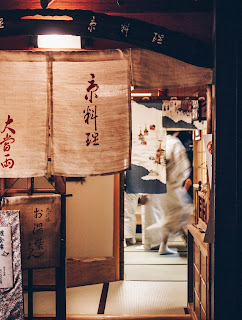This Is How a Lifetime's Favorite Japanese Dish Is Made
Japanese people call each meal "gohan." For example, breakfast is called "asa-gohan." A bowl of steamed rice is included in typical Japanese meals and can be part of breakfast, lunch, or dinner. Side dishes are called okazu and are served with rice and soup. Rice is a staple of the Japanese diet. Rice cakes (mochi) are also commonly consumed. They range from sweet to savory and have many different preparations from boiled to grilled.
A Japanese Take on Three Square Meals
Traditional Japanese breakfast consists of steamed rice, miso (soybean paste) soup, and side dishes, such as grilled fish, tamagoyaki (rolled omelet), pickles, nori (dried seaweed), natto, and so on. Various rice bowls and noodle dishes are popular for lunch. For example, ramen, soba, udon, and gyudon beef bowls are popular. Many people take bento lunch boxes to school or work. Dinner is usually the main meal of the day and can range from sushi to tori katsu, which is like a chicken cutlet. Modern Japanese dishes are highly influenced by other Asian and Western cuisines.
Seafood
Besides rice, seafood is highly consumed in Japan since the country is surrounded by oceans. Seaweed, fish, clams, fish cakes are popular ingredients in Japanese cooking. Of course, sushi and sashimi are also quite popular.
Dashi Soup Stock
Dashi soup stock used in traditional dishes is made from katsuobushi (dried bonito flakes) and/or kombu (kelp). The stock is used as a base for noodle, seafood, or other dishes.
Seasonings
Essential seasonings are soy sauce, mirin, and miso. Umami, a Japanese word that has become quite popular in Western culinary vocabulary, is known as the fifth basic taste. Essentially, it's the savory taste and is key in Japanese cuisine.
Wa-Shoku
Japanese people distinguish traditional Japanese-style dishes as "wa-shoku" (wa means Japanese-style, and shoku indicates food) as opposed to Western food, which is generally called "yo-shoku." Chinese dishes are called "chuuka," and chuuka dishes cooked in Japan are arranged in Japanese-style. It's similar to authentic Chinese dishes but has its differences.
Regional Differences
 Japan is a small country, but each region or even a city has its own specials. Mainly, there are Kanto region (eastern area of the main island) food and Kansai region (western area of the main island) food. Generally, Kanto food has strong flavors, and Kansai food is lightly seasoned. Many dishes are cooked differently between the Kansai and Kanto regions.
Japan is a small country, but each region or even a city has its own specials. Mainly, there are Kanto region (eastern area of the main island) food and Kansai region (western area of the main island) food. Generally, Kanto food has strong flavors, and Kansai food is lightly seasoned. Many dishes are cooked differently between the Kansai and Kanto regions.
Cutlery and Table Settings
To eat Japanese-style meals, chopsticks are commonly used. Also, Japanese people use forks, knives, or spoons, depending on what types of food people are eating. The traditional Japanese table setting is to place a bowl of rice on your left and to place a bowl of miso soup on your right side on the table. Other dishes are set behind these bowls. Chopsticks are placed on a chopstick holder in front of soup and rice bowls.





I think sashimi in Japan is one of the best in the world
ReplyDeleteYou look so familiar… I think I saw you somewhere, probably in my dreams…
ReplyDeleteI hear Japanese food is very delicious. When I travel to Japan, I must try these delicious food
ReplyDeleteI want to learn how to make Japanese food. I need to buy a Japanese recipe to learn how to make Japanese food. I like sushi, ha ha
ReplyDeleteI met a Japanese friend who taught me how to eat Japanese food properly. At first I didn't accept wasabi and sashimi, but now I've got something to taste.
ReplyDelete